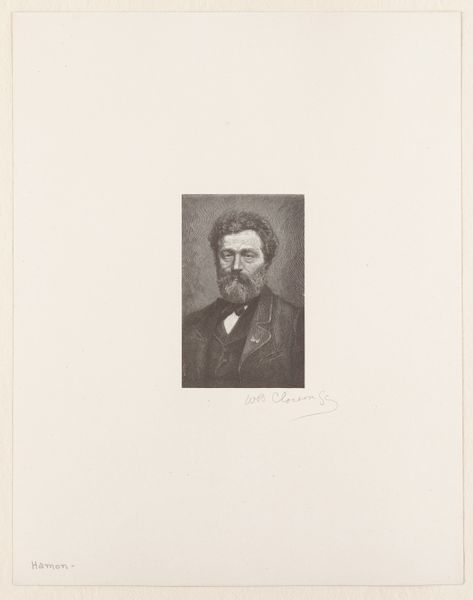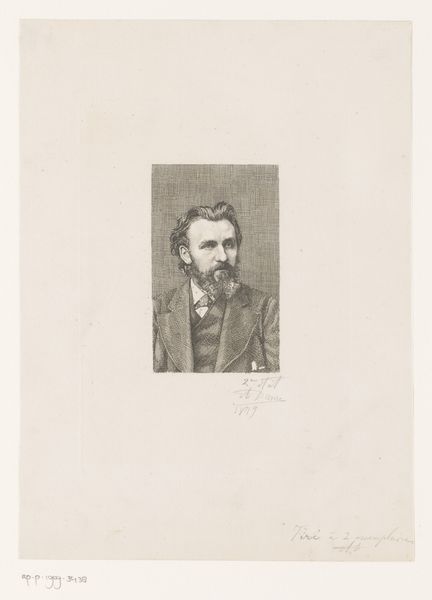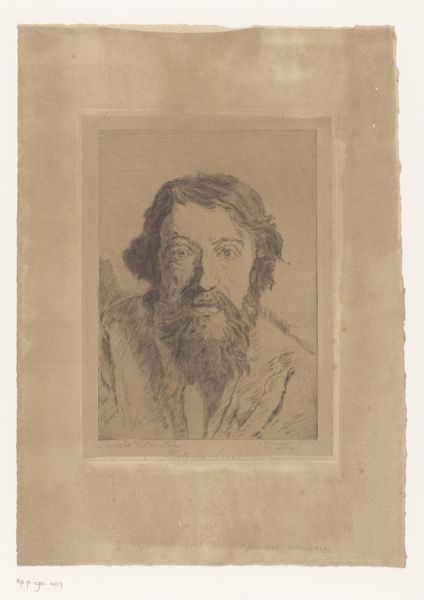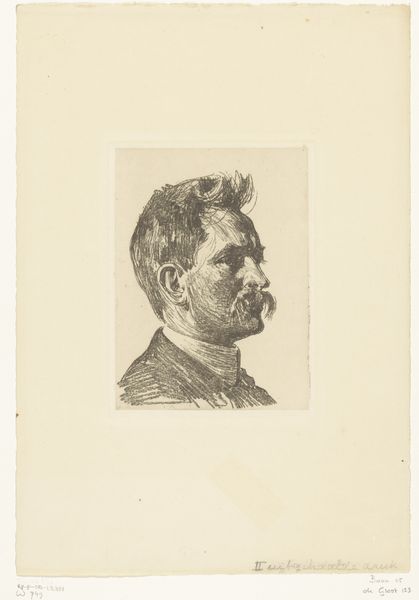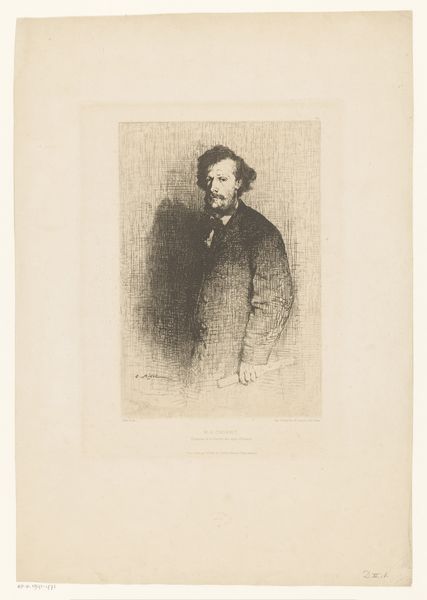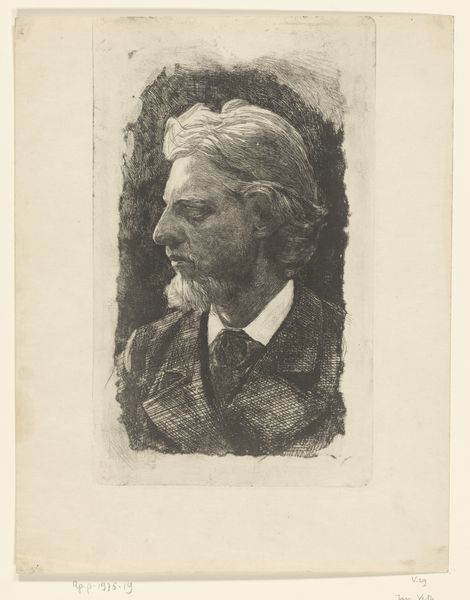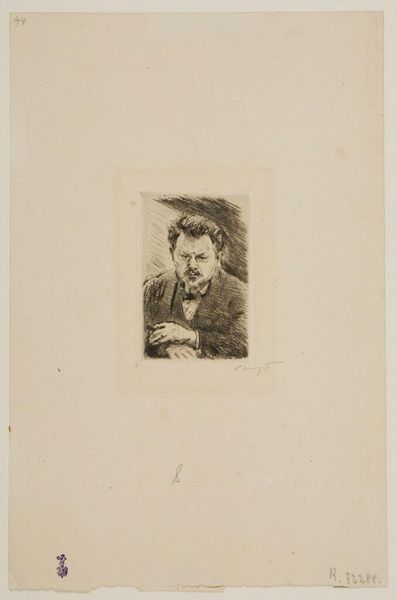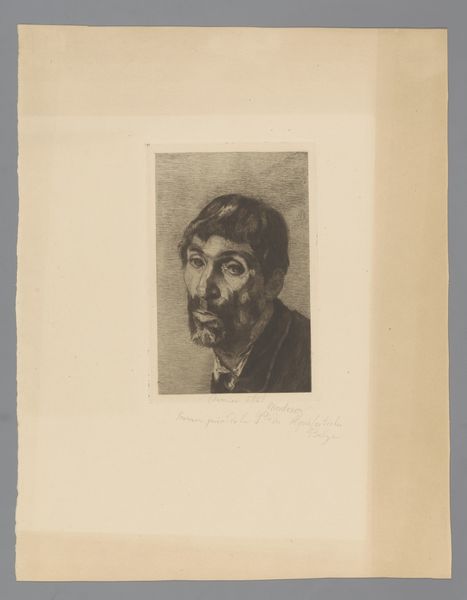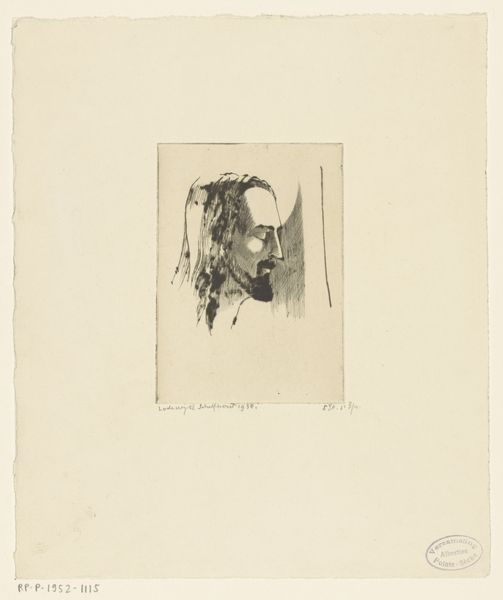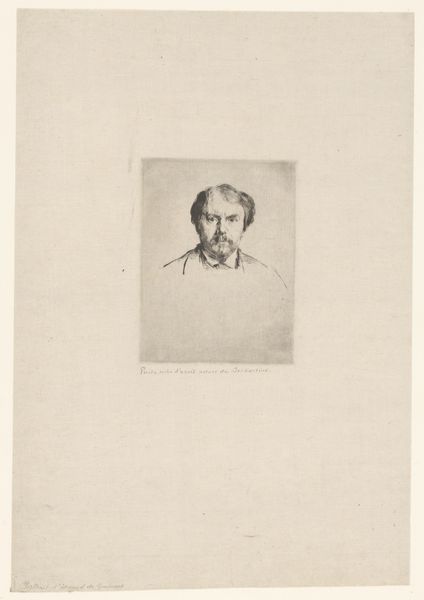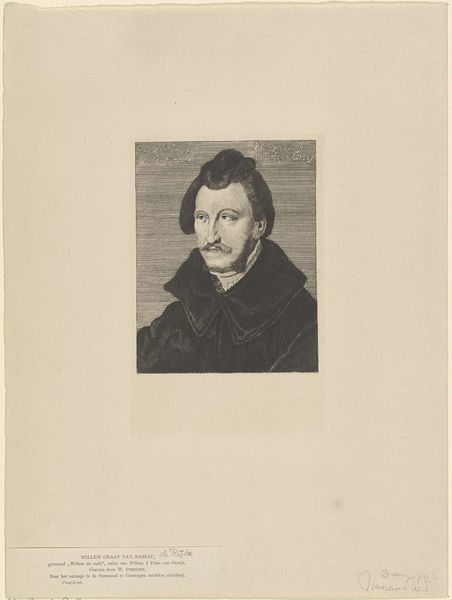
Dimensions: height 108 mm, width 79 mm
Copyright: Rijks Museum: Open Domain
Editor: This is Willem Witsen's etching "Portret van Willem Kloos," made around 1891. The image itself is quite small, and almost seems lost in all the blank space. What’s your take on this portrait? Curator: It’s interesting how the choice of presentation and the act of portraiture itself intersect here. Witsen wasn't just capturing Kloos’ likeness; he was actively shaping how this intellectual figure was perceived within the cultural landscape of the time. Etchings, especially in literary circles, carried a certain gravitas. Consider the intended audience; what social or artistic circles would likely view this work? Editor: I'm guessing other writers and artists, maybe in literary magazines? So, its dissemination contributed to constructing Kloos's public image within that group? Curator: Precisely. Think about the subtle rebellion within the Impressionistic style used for a portrait. It goes beyond simple representation. What message does this choice send to contemporary artistic circles, or about Kloos's own forward-thinking ideas, through the art world? Editor: I see what you mean. Instead of stiff formality, it’s softer, suggesting a more intimate or modern take. Was there an intentional democratizing impulse at play through making multiples? Curator: Good question! Certainly. The reproductive nature of etching made art accessible to a wider audience, diverging from exclusive oil paintings for the elite. This availability creates social relevance. Editor: So, the medium is essential to understanding its social impact! This reframes my view on its value and purpose. Thanks. Curator: Indeed. Thinking about the original setting refines our understanding and amplifies our historical viewpoint.
Comments
No comments
Be the first to comment and join the conversation on the ultimate creative platform.
